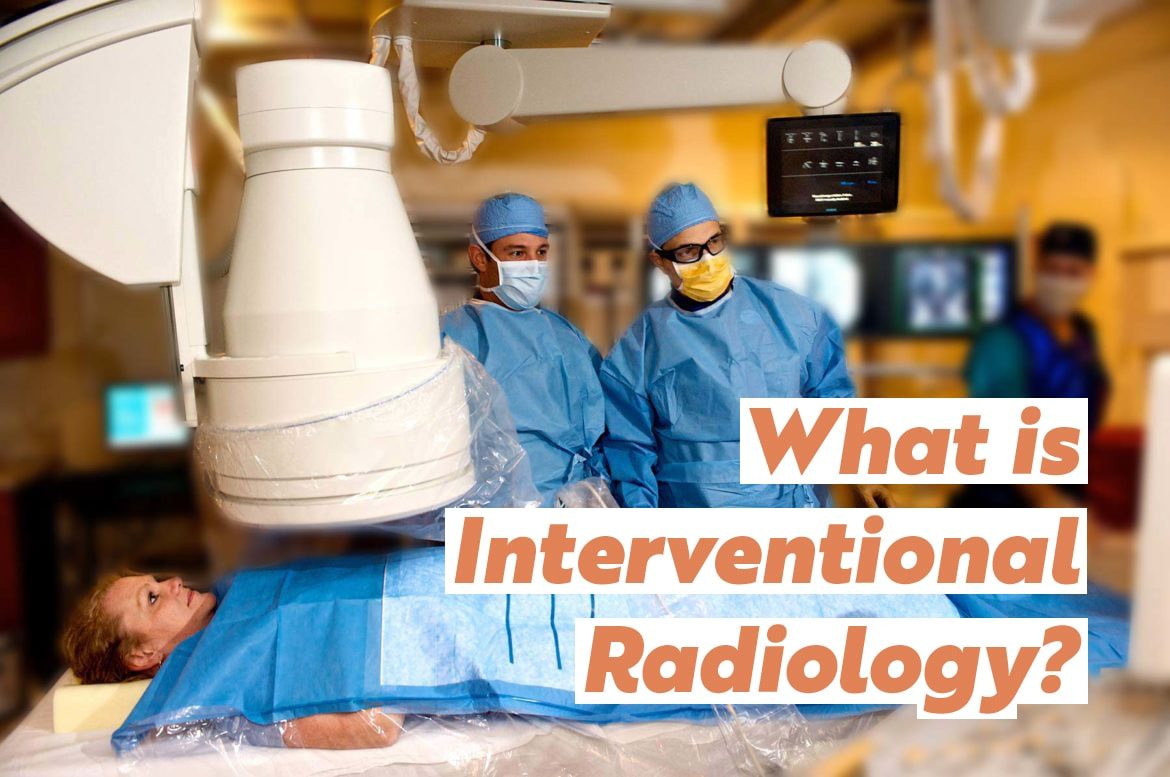Interventional radiology (IR) is a specialized field within radiology. In interventional radiology, doctors not only interpret your medical images, but they also perform minimally invasive surgical procedures through small incisions in the body.
What is Interventional Radiology?
In interventional radiology (also called IR), doctors use medical imaging to guide minimally invasive surgical procedures that diagnose, treat, and cure many kinds of conditions. Imaging modalities used include fluoroscopy, MRI, CT, and ultrasound. At UVA Health System, these radiologists work in the department of vascular and interventional radiology.
Interventional radiologists make small incisions, usually in your abdomen, and use needles and catheters to treat conditions inside your body. Medical images are used to guide their catheters through your blood vessels, arteries, and organs. Cool, right?
If you were to be in the room during a typical IR procedure, you’d see the patient lying on an operating table with a specialized X-ray camera–a fluoroscope–above them. The radiologist would be wearing necessary protective coverings, a blue gown, and a mask. They would be guiding needles and wire-looking medical equipment through the patient’s body while looking at the medical images projected on the screen. It’s amazing how they can use medical images to see exactly where their equipment is located and how to maneuver inside the body without making any major incisions.
Why Interventional Radiology?
Interventional radiology reduces cost, recovery time, pain, and risk to patients who would otherwise need traditional open surgery. Because of this, IR has become the primary way to treat many types of conditions. The treatments IR can effectively perform are ever-changing and expanding.
 Your Interventional Radiologist
Your Interventional Radiologist
At UVA, your interventional radiologist attended four years of medical school to become a doctor. Then, they completed a four-year residency in diagnostic radiology before completing their highly specialized one- or two-year fellowship in IR. They are trained extensively in both diagnostic radiology (how to interpret and accurately diagnose medical images) and interventional therapy (performing IR procedures).
Learn more about interventional radiologists and the kinds of things they do every day.
Infographic Text: Examples of IR Procedures:
- Angioplasty- repair or unblocking of blood vessels.
- Stenting- small mesh tubes that treat narrow or weak arteries.
- Thrombolysis- dissolving blood clots.
- Embolization- block blood flow to cancer cells.
- Radiofrequency ablation- used to reduce nerve pain.
- Biopsies- study of tissues.





